Donna Roy
ImGeoNet: Image-induced Geometry-aware Voxel Representation for Multi-view 3D Object Detection
Aug 17, 2023



Abstract:We propose ImGeoNet, a multi-view image-based 3D object detection framework that models a 3D space by an image-induced geometry-aware voxel representation. Unlike previous methods which aggregate 2D features into 3D voxels without considering geometry, ImGeoNet learns to induce geometry from multi-view images to alleviate the confusion arising from voxels of free space, and during the inference phase, only images from multiple views are required. Besides, a powerful pre-trained 2D feature extractor can be leveraged by our representation, leading to a more robust performance. To evaluate the effectiveness of ImGeoNet, we conduct quantitative and qualitative experiments on three indoor datasets, namely ARKitScenes, ScanNetV2, and ScanNet200. The results demonstrate that ImGeoNet outperforms the current state-of-the-art multi-view image-based method, ImVoxelNet, on all three datasets in terms of detection accuracy. In addition, ImGeoNet shows great data efficiency by achieving results comparable to ImVoxelNet with 100 views while utilizing only 40 views. Furthermore, our studies indicate that our proposed image-induced geometry-aware representation can enable image-based methods to attain superior detection accuracy than the seminal point cloud-based method, VoteNet, in two practical scenarios: (1) scenarios where point clouds are sparse and noisy, such as in ARKitScenes, and (2) scenarios involve diverse object classes, particularly classes of small objects, as in the case in ScanNet200.
Object-Level Targeted Selection via Deep Template Matching
Jul 05, 2022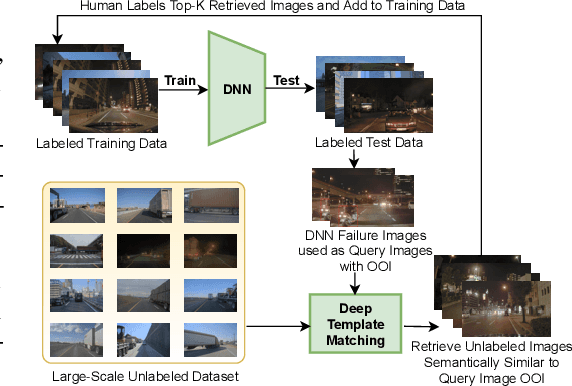
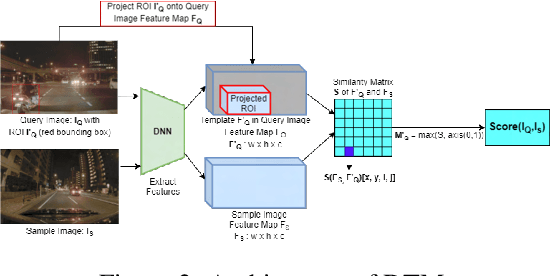
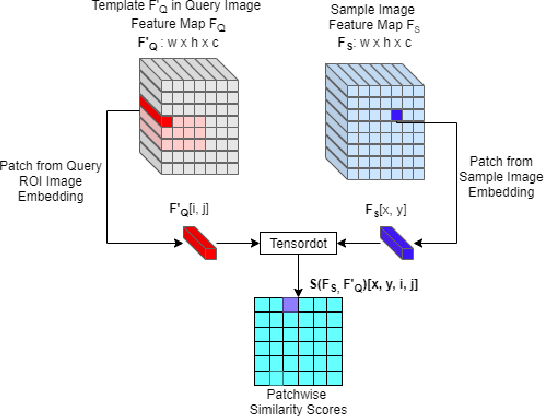
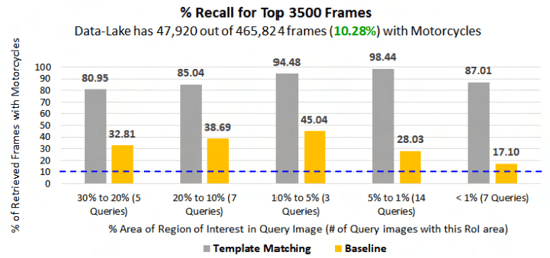
Abstract:Retrieving images with objects that are semantically similar to objects of interest (OOI) in a query image has many practical use cases. A few examples include fixing failures like false negatives/positives of a learned model or mitigating class imbalance in a dataset. The targeted selection task requires finding the relevant data from a large-scale pool of unlabeled data. Manual mining at this scale is infeasible. Further, the OOI are often small and occupy less than 1% of image area, are occluded, and co-exist with many semantically different objects in cluttered scenes. Existing semantic image retrieval methods often focus on mining for larger sized geographical landmarks, and/or require extra labeled data, such as images/image-pairs with similar objects, for mining images with generic objects. We propose a fast and robust template matching algorithm in the DNN feature space, that retrieves semantically similar images at the object-level from a large unlabeled pool of data. We project the region(s) around the OOI in the query image to the DNN feature space for use as the template. This enables our method to focus on the semantics of the OOI without requiring extra labeled data. In the context of autonomous driving, we evaluate our system for targeted selection by using failure cases of object detectors as OOI. We demonstrate its efficacy on a large unlabeled dataset with 2.2M images and show high recall in mining for images with small-sized OOI. We compare our method against a well-known semantic image retrieval method, which also does not require extra labeled data. Lastly, we show that our method is flexible and retrieves images with one or more semantically different co-occurring OOI seamlessly.
Scalable Active Learning for Object Detection
Apr 09, 2020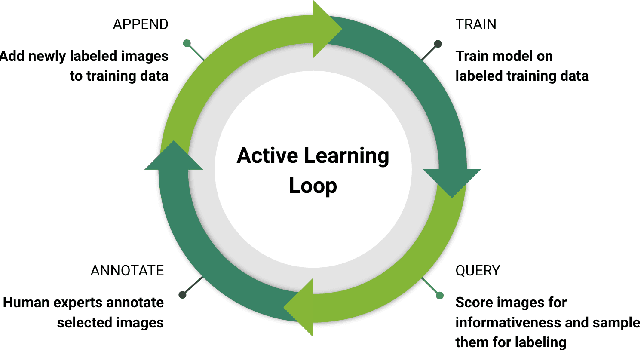
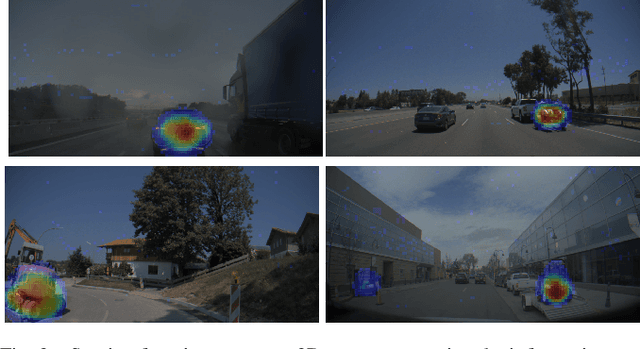
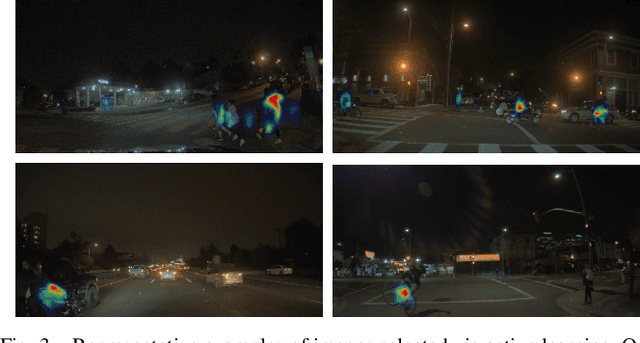
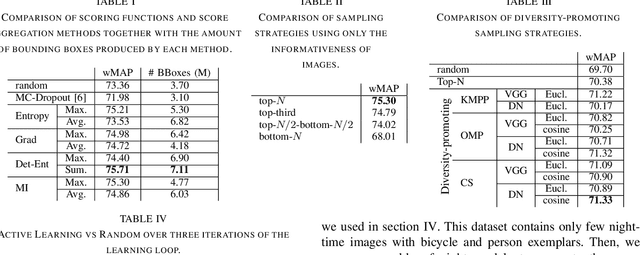
Abstract:Deep Neural Networks trained in a fully supervised fashion are the dominant technology in perception-based autonomous driving systems. While collecting large amounts of unlabeled data is already a major undertaking, only a subset of it can be labeled by humans due to the effort needed for high-quality annotation. Therefore, finding the right data to label has become a key challenge. Active learning is a powerful technique to improve data efficiency for supervised learning methods, as it aims at selecting the smallest possible training set to reach a required performance. We have built a scalable production system for active learning in the domain of autonomous driving. In this paper, we describe the resulting high-level design, sketch some of the challenges and their solutions, present our current results at scale, and briefly describe the open problems and future directions.
 Add to Chrome
Add to Chrome Add to Firefox
Add to Firefox Add to Edge
Add to Edge